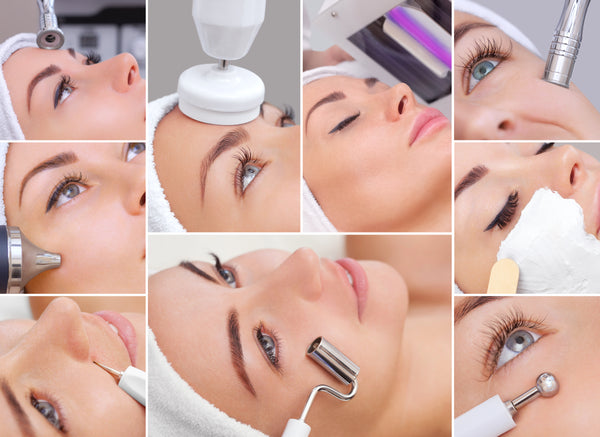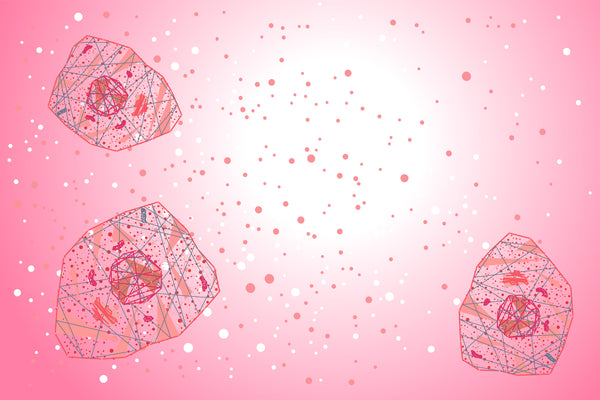The use of devices in esthetics can bring new life into a treatment room and is gaining popularity among clients. The marketing trends of esthetic modalities have clients seeking treatments with various skin rejuvenation devices. With all the devices available for estheticians to use, it may be hard to decipher which are best for your practice. Microcurrent, Sonophoresis, and LED are just a few of the sought-out devices used in skin care treatments to enhance results. The use of devices should not be taken lightly. First and foremost, you must protect your license by knowing your state regulations and the FDA classification of each device. State regulations are not always clear, making it hard to understand the necessary rules. The Esthetics Council is an organization that can give you guidance on state regulations; they provide advocacy support and education to estheticians.
LED
LED, commonly referred to simply as light therapy, produces low levels of light energy. During the 1990s, NASA-sponsored research determined that an LED system could provide the necessary wavelengths and intensities to produce photosynthesis and grow plants in space. NASA subsequently discovered that LED could address astronaut health by maintaining strong cell growth, preventing bone and muscle loss, and boosting the body’s ability to heal wounds. A light emitting diode is a type of semiconductor that converts electrical energy into light energy that is released in the form of photons (bundles of light energy). The body’s cells can absorb photons and convert them to the form of energy that cells use to carry out normal functions. This form of energy is called adenosine triphosphate, or ATP. As we age, we produce less ATP, which inhibits cells from performing at peak function.
In the treatment room, providers use LED at various wavelengths of the light spectrum to target specific skin concerns. Blue light is mainly used for those with acne, due to its antibacterial properties. Red light is used for skin rejuvenation to improve the appearance of lines and wrinkles. Infrared is often used to fight the signs of inflammation. Blue, red, and infrared are the most researched but there are other beneficial colors as well. The treatment is simple if all the guidelines are followed including the use of eye protection. LED is applied on clean skin or with an approved clear serum or mask. LED is used widely in skin care by estheticians and medical providers since it has demonstrated effective results with the appearance of many skin conditions.
Microcurrent
Microcurrent is a modality in which a low-level electrical current is used to mimic the current flow of the body. It was first used in the 1970s to treat Bells-Palsy, a condition the causes drooping around one eye. It was approved by the FDA as a muscle stimulator in the early 1980s and has been used since therapeutically for wound healing. Microcurrent is commonly used today for overall skin rejuvenation. Throughout the human body there are naturally occurring electric currents that aid in repair and regeneration. These currents can essentially turn on a process in the body, the way that electricity from a wall socket can turn on a light or radio. Microcurrent mimics a very low level of electrical energy like ATP. The treatment consists of two poles, a positive and a negative, being applied to the skin over a water-based gel with specific movements according to muscle structure. The idea with microcurrent is to stimulate the skin with repeated treatments, like routinely working out, this will improve the appearance of muscle tone. The combination of benefits results in an overall improvement to the look and health of the skin.
Ultrasound
Ultrasound is best known for monitoring fetuses during pregnancy and diagnosing medical conditions, but it has many other uses. Ultrasound technology has been used for skin rejuvenation in aesthetic treatments after being discovered for stimulating wound repair in poorly healing skin. The physiological benefits of ultrasound are categorized as thermal, heat-producing which are used in a medical setting and non-thermal, non-heat producing more commonly used by estheticians. The non-thermal nature of ultrasound acts to create microscopic bubbles through vibrations produced by sound waves, known as cavitation. Cavitation essentially creates small pathways in the lipid bilayers between superficial skin cells allowing products to work more effectively. Ultrasound uses a rapidly oscillating probe to create sound waves that are conducted to the skin through a water-based gel. The probe is moved in circular motions around the face or simply held in one area at a time. Clients describe it as relaxing and they appreciate the immediate glow to their skin, making it ideal before an event. Low-level ultrasound remains popular because it increases the effectiveness of products, there is no downtime, and takes only minutes.
This is a brief overview of the science behind a few popular technologies used today. To make an informed decision on the best devices for you and your clientele, you must thoroughly understand the benefits and risks to each device you are considering. Once a device is chosen, it is essential to get the proper education to allow for safe, effective treatments. Devices can enhance your results and your business when the proper steps are taken.
- Whelan HT, Smits RL Jr, Buchman EV, Whelan NT, Turner SG, Margolis DA, Cevenini V, Stinson H, Ignatius R, Martin T, Cwiklinski J, Philippi AF, Graf WR, Hodgson B, Gould L, Kane M, Chen G, Caviness J. Effect of NASA light-emitting diode irradiation on wound healing. J Clin Laser Med Surg. 2001 Dec;19(6):305-14. doi: 10.1089/104454701753342758. PMID: 11776448.
- Sugimoto, Y., Hirakawa, K., Morita, Y., Takami, K., Tamai, H., & Kayano, T. (2013). Effects of LED phototherapy on wound healing: a review. International journal of molecular sciences, 14(6), 11555-11571.
- D Barolet, Light-emitting diodes (LEDs) in dermatology, Semin Cutan Med Surg, 27, 227-238 (2008).



0 comments